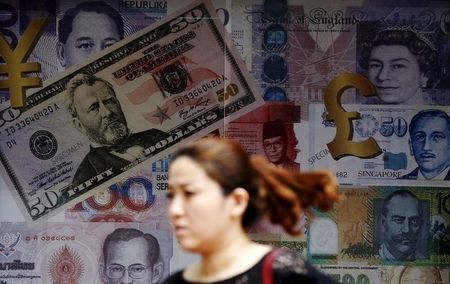Month: December 2024
How A Bitcoin Fear and Greed Index Trading Strategy Beats Buy and Hold Investing
The Bitcoin Fear and Greed Index is a sentiment analysis tool that captures the collective mood of Bitcoin traders and investors. Spanning a scale of 0 to 100, the index identifies market emotions ranging from extreme fear (0) to extreme greed (100). While it’s a popular resource among many analysts, it certainly has some doubters! So, let’s look at the data to quantifiably prove if this index can actually help you make better investment decisions.
Investor Emotion
The Fear and Greed Index aggregates various metrics to provide a snapshot of market sentiment. These metrics include:
Price Volatility: Large price swings often evoke fear, especially during downturns.
Momentum and Volume: Increased buying activity generally signals greedy sentiment.
Social Media Sentiment: Public discourse about Bitcoin across platforms reflects collective optimism or pessimism.
Bitcoin Dominance: Higher dominance of Bitcoin relative to altcoins usually indicates cautious market behavior.
Google Trends: Interest in Bitcoin search terms correlates with public sentiment.
By synthesizing this data, the index provides a simple visual representation: red zones signify fear (lower values), while green zones indicate greed (higher values).
Figure 1: Bitcoin Fear & Greed Index.
What you’ll also immediately notice is that this tool really outlines how mass psychology is almost always best acted on as a contrarian. Essentially ,if everyone is bearish, you should probably be more bullish and vice versa.
Does Acting Contrarian Work?
To evaluate whether the Fear and Greed Index is more than just a colorful chart, a test was conducted using data dating back to February 2018, when the metric was created. The strategy implemented was straightforward:
Allocate 1% of your capital to Bitcoin on days when the index reads 20 or below, and sell 1% of your Bitcoin holdings on days when the index reaches 80 or above. If such a basic strategy performed fairly well, then we can definitely deem it a useful tool for investors.
Figure 2: Raw API data converted to visualize the index on TradingView.
The Results
This strategy significantly outperformed a simple buy-and-hold approach. The above Fear and Greed Strategy produced a 1,145% return on investment, whereas a Buy & Hold Strategy achieved a 1,046% ROI over the same period. The difference, though not monumental, demonstrates that carefully scaling into and out of Bitcoin based on market sentiment can yield better returns than simply holding the asset.
Figure 3: Fear & Greed strategy outperformed Buy & Hold.
The Fear and Greed Index is rooted in human psychology. Markets tend to overreact in both directions. By acting counter to these extremes, the strategy effectively leverages irrational and emotional market behavior. By scaling in during fear and out during greed, the strategy mitigated risks and compounded profits to outperform one of the world’s best-performing assets.
Keep in mind that this strategy was only profitable with proper trade management by slowly scaling in and out over macrocycles and doesn’t take into consideration any fees or taxes that may be liable. Conditions can remain irrationally fearful or greedy for months at a time, and trying to massively increase exposure or take profits purely based on this metric is unlikely to be successful in the long term.
Conclusion
Despite its simplicity, the Fear and Greed Index has proven its merit when used thoughtfully. It aligns with the principle of “buy when others are fearful, sell when others are greedy,” which has guided many successful investors.
The Fear and Greed Index should be used alongside other tools such as on-chain data and macroeconomic indicators for confluence, however the data proves this is definitely a metric worth considering within your own analysis.
For a more in-depth look into this topic, check out a recent YouTube video here: Does The Bitcoin Fear & Greed Index ACTUALLY Work?
Explore live data, charts, indicators, and in-depth research to stay ahead of Bitcoin’s price action at Bitcoin Magazine Pro.
Disclaimer: This article is for informational purposes only and should not be considered financial advice. Always do your own research before making any investment decisions.
Governments And Large Institutions Can Buy All The Bitcoin They Want (Except Yours)
An X post by Anita Posch warning about the risks of governments and institutions buying up large amounts of bitcoin went viral this week— even if just because of the trollish community note that appeared underneath it. I think the main concern here is that these big holders could influence the Bitcoin consensus rules to impose censorship.
When it comes to censorship specifically, mining centralization is actually a more direct threat. But if it’s just miners censoring, it would only last for as long as a majority of miners is willing to keep doing it— at the expense of forfeiting transaction fees. If and when the censorship stops, transactions would start confirming again as if nothing happened.
If economic nodes were to enforce censorship as new protocol rules as well, however, it can indeed be considered a soft fork. In this scenario, miners can’t revert from the censorship without splitting the blockchain between “upgraded” (censoring) and non-upgraded nodes; that would constitute a hard fork. Buyers and sellers of the two versions of bitcoin would then determine which blockchain is more valuable; this is why some bitcoiners are concerned about governments and other large institutions accumulating a significant share of the bitcoin supply.
It’s a reasonable concern, and something to be aware of. At the same time (and similar to my argument in this Take), it’s not obvious to me that governments or large institutions would be willing to risk it all by betting on a censorship fork of Bitcoin. But even more importantly, there isn’t much we can do to stop governments or other institutions from buying bitcoin anyways— nor should there be, as that would (ironically) itself represent a form of censorship.
The best countermeasure, in this regard, was actually already proposed by Nikolaus: Don’t sell MicroStrategy your bitcoin.
This article is a Take. Opinions expressed are entirely the author’s and do not necessarily reflect those of BTC Inc or Bitcoin Magazine.
Dollar heads for positive week; sterling hit by GDP weakness
Post Content
EUR/USD ‘survives’ the ECB test: ING
Post Content
Asia FX slips as dollar firms before the Fed; yuan hit by underwhelming stimulus
Post Content
Trump trade adviser warns against currency manipulation as China mulls weaker yuan
Post Content
Brazilian real weakens post rate hike, Lula’s 2026 bid stirs market
Post Content
Texas State Rep Files For Strategic Bitcoin Reserve
Follow Nikolaus On 𝕏 Here For Daily Posts
Today, Texas State Representative Giovanni Capriglione officially filed for a Strategic Bitcoin Reserve bill for the state of Texas during a 𝕏 spaces with Dennis Porter of Satoshi Action Fund, a Bitcoin advocacy organization working with politicians on pro-Bitcoin legislation.
To summarize, the bill would effectively:
Buy and hold bitcoin as a strategic reserve asset.Securely store the BTC in cold storage for at least five years.Allow Texas residents to donate bitcoin to the reserve.Ensure transparency via yearly reports and audits. Allow state agencies to accept cryptocurrencies, and convert them to bitcoin. Establish rules for security, donations, and management.
“This Act takes effect immediately if it receives a 12 vote of two-thirds of all the members elected to each house, as 13 provided by Section 39, Article III, Texas Constitution,” the legislation states. “If this Act 14 does not receive the vote necessary for immediate effect, this Act 15 takes effect September 1, 2025.”
This is yet another step towards America embracing Bitcoin, fueled by President-elect Donald Trump and Senator Cynthia Lummis’ lead from introducing a Strategic Bitcoin Reserve bill for the United States earlier this year. The hype around implementing a Strategic Bitcoin Reserve has caused a snowball effect of other states and countries introducing legislation to adopt one as well. Other states like Pennsylvania and countries like Russia, Brazil, and Poland are among those introducing bills for a Strategic Bitcoin Reserve.
“Chairman Capriglione is the Chair of the Texas Pensions, Investments, and Financial Services Committee so this bill has legs!” commented Lee Bratcher, President of the Texas Blockchain Council. “No taxpayer funds will be spent on the bitcoin.”
Can Realized Cap HODL Waves Identify The Next Bitcoin Price Peak?
Bitcoin’s cyclical nature has captivated investors for over a decade, and tools like the Realized Cap HODL Waves offer a window into the psychology of the market. As an adaptation of the traditional HODL waves, this indicator provides crucial insights by weighting age bands by the realized price—the cost basis of Bitcoin held in wallets at any given time.
Currently, the six-month-and-below band sits at ~55%, signaling a market with room to grow before reaching overheated levels historically seen around 80%. In this article, we’ll dive into the details of Realized Cap HODL Waves, what they tell us about the market, and how investors can use this tool to better navigate Bitcoin’s price cycles.
When the 6-month and below #Bitcoin Realized Cap HODL Waves bands surpass ~80%, it’s a good indication the market is over-heated, and a major price peak is likely…
Currently we’re at around 55%, plenty of upside to go for #BTC!
— Bitcoin Magazine Pro (@BitcoinMagPro) December 12, 2024
Click here to view the Realized Cap HODL Waves live chart on Bitcoin Magazine Pro.
Understanding Realized Cap HODL Waves
At its core, the Realized Cap HODL Waves chart shows the cost basis of Bitcoin held in wallets, grouped into different age brackets. Unlike traditional HODL waves, which track the total supply of Bitcoin, this chart accounts for the realized value—a measure of the price at which Bitcoin was last moved.
The key insight? Younger age bands (e.g., coins held for six months or less) tend to dominate during bullish phases, reflecting rising market optimism. Conversely, older age bands gain prominence during bearish phases, often coinciding with market bottoms when investor sentiment is subdued.
This dynamic allows the chart to serve as a barometer for market cycles, identifying periods of overheating or underpricing with remarkable accuracy.
Why 80% Is Critical: Historical Context
The chart reveals that when short-term holders—represented by the six-month-and-below age bands—make up 80% or more of the total realized cap, Bitcoin is often nearing a major market peak. This level historically aligns with euphoric price action, where speculative mania drives the market.
For example:
2013 Bull Market: The six-month band surpassed 80% during Bitcoin’s meteoric rise, marking the peak of the cycle.2017 Bull Market: A similar pattern occurred as Bitcoin reached its then-all-time high of $20,000.2021 Bull Market: Peaks in the short-term bands preceded corrections, reinforcing the indicator’s predictive value.
At the current ~55% level, there is ample room for Bitcoin to grow before reaching the overheated territory historically seen near 80%.
What the Data Tells Us Today
The latest Chart of the Day, shared by Bitcoin Magazine Pro, underscores the importance of this indicator. Here are the key takeaways:
Room for Growth: With the six-month-and-below bands at 55%, the market appears to be in a healthy growth phase with significant upside potential.No Overheating Yet: Historically, overheating occurs when these bands exceed 80%. This suggests Bitcoin has room to run before encountering similar conditions.Cycle Perspective: The current cycle aligns with early-to-mid-stage bull market behavior, where newer investors are accumulating, and optimism is building.
The ETF Effect: How Bitcoin ETFs Could Impact Realized Cap HODL Waves
Unlike previous Bitcoin cycles, 2024 marks a significant shift with the introduction of Bitcoin ETFs. These financial products, designed to provide institutional and retail investors easy exposure to Bitcoin, have the potential to reshape the on-chain data reported by tools like Realized Cap HODL Waves. While this indicator has historically been a reliable measure of market cycles and price peaks, the dynamics of this cycle may differ.
Bitcoin ETFs aggregate investments from numerous participants into centralized custodial wallets, reducing the number of active on-chain addresses and transactions. This centralization introduces unique challenges when interpreting Realized Cap HODL Waves:
Younger Age Bands May Underestimate Market Activity: ETF trading occurs off-chain, meaning that short-term transactions and active addresses might be underrepresented in the six-month-and-below bands. As a result, the indicator could suggest less market enthusiasm than is actually present.Older Age Bands May Dominate: Long-term Bitcoin holdings within ETFs could shift realized value into higher age bands, making it appear that the market is more conservative and less dynamic than in previous cycles.
While ETFs bring increased liquidity and price discovery through traditional markets, they also introduce complexities for on-chain analysis. This shift highlights the importance of adapting how we interpret indicators like Realized Cap HODL Waves in the context of evolving market structures.
Why This Cycle May Be Different
With Bitcoin ETFs now playing a central role, this cycle may not follow the same patterns as previous ones. The historical success of Realized Cap HODL Waves in identifying price peaks remains noteworthy, but investors should consider that ETFs represent a new variable. Increased adoption via ETFs could lead to more significant price movements that are less directly visible in on-chain data.
As always, it’s crucial not to rely solely on one indicator for investment decisions. Tools like Realized Cap HODL Waves are best used to supplement broader market analysis, providing valuable insights into underlying market trends. By combining on-chain indicators with ETF inflow data and other metrics, investors can gain a clearer and more comprehensive understanding of Bitcoin’s price dynamics in this new era.
How Investors Can Use Realized Cap HODL Waves
For investors, the Realized Cap HODL Waves chart offers actionable insights:
Market Sentiment: Use the six-month band as a gauge of market euphoria or fear. Higher percentages indicate bullish sentiment, while lower percentages often signal consolidation or accumulation phases.Cycle Timing: Peaks in younger age bands often precede corrections. Monitoring these levels can help investors manage risk during bullish cycles.Strategic Positioning: Understanding when the market is overheating can help long-term holders optimize their exit strategies, while buyers may find opportunities during periods dominated by older age bands.
Conclusion: Bullish Outlook with Room to Run
The Realized Cap HODL Waves chart is an invaluable tool for understanding Bitcoin’s price cycles. With the six-month-and-below bands currently at 55%, the market shows plenty of upside potential before hitting overheated levels. For investors, this means the current phase offers an attractive opportunity to capitalize on Bitcoin’s growth trajectory.
As always, it’s crucial to combine this indicator with other tools and fundamental analysis. To explore more live data and stay updated on Bitcoin’s price action, visit Bitcoin Magazine Pro.
Disclaimer: This article is for informational purposes only and should not be considered financial advice. Always do your own research before making any investment decisions.
Euro dips as ECB cuts deposit rate to 3.0%; BNP sees parity by the end of 2025
Post Content










